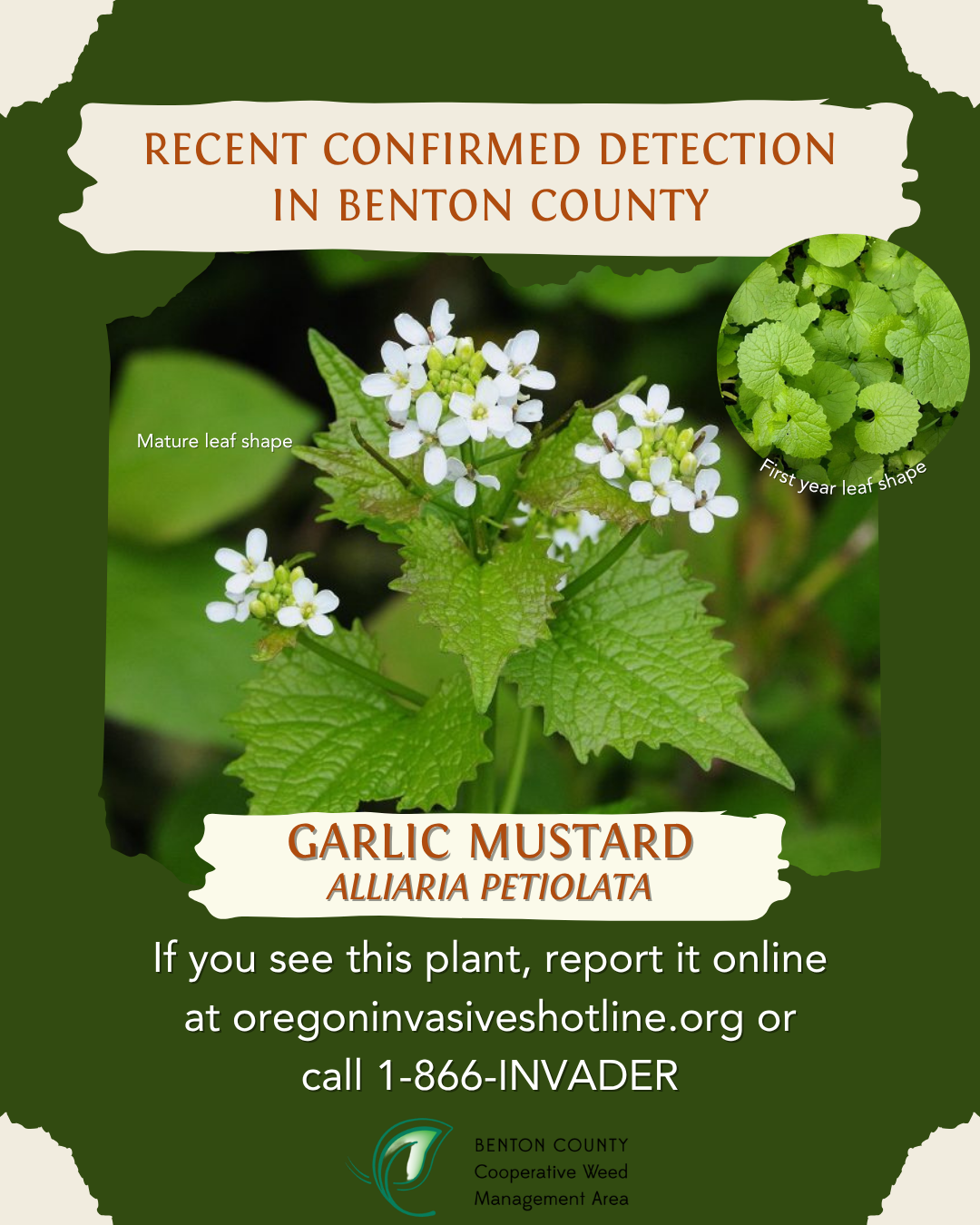The Dirt | Weed of the Month November 2025 | Garlic Mustard (Alliaria petiolata)





Our November Weed of the Month is Garlic mustard (Alliaria petiolata). Garlic mustard is a biennial plant, meaning it takes at least two years to complete its life cycle. In the first year, it is strictly vegetative and basal (growing on the ground). The leaves are small and kidney shaped with shallowly scalloped edges. In this phase of life, it could look similar to other plants that begin as basal vegetative clusters such as checkermallows or ground ivy. An easy way to distinguish garlic mustard from other plants in its vegetative state is the aroma of garlic when leaf parts are crushed.
In the second year, the plant begins to grow a vertical flowering stalk and the leaves along the stem change shape. Now, they are triangular with dentate edges. The flowers are small and white with four petals in a cross formation. They tend to bloom quickly and fall off earlier than other parts of the plant.
Garlic mustard is an extremely problematic species. It tends to quietly invade forest understories and riparian areas and escape detection until the infestation is significant. The seeds of this species are also easily spread via human activities by being stuck on shoes, animals, and equipment tires.
Early Detection, Rapid Response in action
In July of this year, an approximately 1-2 acre infestation of Garlic mustard was detected in Benton County near Monroe, OR. The infestation was reported on the Oregon Invasives Hotline, which triggered Benton SWCD and Oregon Department of Agriculture to respond, as there has not been a reported positive detection of Garlic mustard in Benton County for over a decade. Together, Benton SWCD and ODA have been treating the infestation with the help of funding from the Oregon State Weed Board. Read more about this story on the Benton County Cooperative Weed Management Area (CWMA) page here.
Have you seen Garlic Mustard in Benton County? Report it NOW.
Make a report on OregonInvasivesHotline.org OR email Cierra Dawson at cierra@bentonswcd.org with a photo of the plant and an approximate location. Funding is available to help remove this species at no cost to you.




